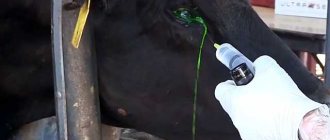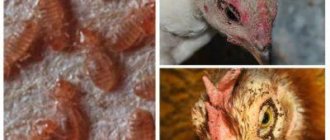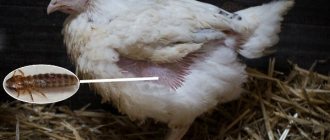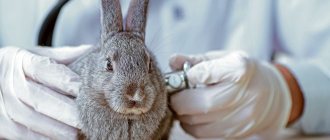Features of pregnancy
A pregnant cow is called the period from successful fertilization to birth.
Moreover, it should not be her first. The first fertilized young individual is called a heifer. That is, a pregnant cow has already given birth to a calf, and after some time she became pregnant again. During the pregnancy period, competent livestock breeders keep a special calendar that tells how to determine the due date of a cow. The quality of the offspring and productivity after birth depend on the correct designation of important dates. The calendar breaks down the stages of fetal development by month. A personal table for a female will help to better understand the intricacies of launching pregnant cows. It will help you determine the correct diet.
Interesting
In the first month of pregnancy, practically nothing changes for the cow. The weight of the embryo is small - up to 1 gram, because there is no fetus as such yet. Active growth of the calf begins from the second month. At this time, the placenta appears. The weight of the embryo reaches 20-30 grams.
The fetus will look like a full-fledged calf by the fifth month. By this time it grows to 45 cm and weighs about 50 kg. The fur and hooves on the legs are formed by the 7th month of pregnancy. Already by the time of childbirth, teeth and internal organs are formed.
The entire gestation period of cows lasts for 285 days. If you indicate the date of fertilization in the calendar, it is more convenient to count the days until deadwood and determine the day of calving.
Caring for a pregnant cow
Feeding
Cows require a special diet when pregnant. Note that at the end of pregnancy the weight of the newborn can reach 20 kilograms.
It will be too difficult for a cow to bear a healthy calf, so the farmer is faced with the task of providing her with a balanced diet.
Feed should contain a large amount of proteins and beneficial microelements.
Don't forget about the mandatory availability of water. Watering is necessary 2-4 times a day.
A deficiency of basic vitamins can lead not only to fetal pathologies, but also cause miscarriage.
During the dry period, it is best to feed with forbs and silage. You shouldn’t skimp on high-quality feeds that are designed specifically to prepare for pregnancy.
In winter, coniferous additives in the form of flour or branches will be useful. This is a good source of vitamins that will help prepare for childbirth. Avoid moldy hay and frozen vegetables.
Due to improper nutrition, the condition of the animal and the taste of the milk deteriorate significantly. Such ingredients can be fatal to the fetus and the cow.
Vaccinations
Vaccination of pregnant cows is permissible until the 7th month of pregnancy. 60 days before the expected date of birth, avoid administering any medications.
The exception would be the administration of the anthrax vaccine. Veterinarians also advise avoiding donating blood for leukemia. All this can negatively affect the condition of the pregnant cow and calf.
It is better to do vaccinations in advance before the dry period. Each cow must have its own vaccination schedule, which must be strictly adhered to.
There is no point in risking the livestock, especially if fertilization is in the cards. FMD vaccinations are also given before the 7th month of pregnancy. For this purpose, a lapinized cultured virus vaccine is used.
If it is possible to do this earlier, do not delay until after insemination. The same applies to rabies prevention.
In case of acute deficiency of the vitamin complex, it is important to correct the situation in a timely manner.
The best way is proper nutrition, but if necessary, you will have to inject vitamins. This is a necessary measure to preserve the life of the cow and calf, strengthen their health and safe birth.
Walk
Can a cow walk during pregnancy? Stall housing of pregnant cows leads to an increased risk of disease, decreased productivity and the risk of developing pathological conditions of the fetus in the womb.
To prevent such negative consequences, it is necessary to organize walking areas that protect from wind, bad weather and scorching sun, where pregnant cows can walk freely.
For one cow, the walking area must be at least 8 square meters. meters.
Cows between 6 and 9 months pregnant should be allowed to walk with caution.
It is necessary to reduce walking time in the cold season. In icy conditions, it is better to protect animals from exercise, when they can fall, getting injured and risking miscarriages.
On a note. General walking rules imply separate grazing of pregnant individuals from non-pregnant females, thus avoiding trauma and abortive processes.
Visual pregnancy detection
Signs of pregnancy are determined by:
- behavior;
- condition of the coat;
- secretions.
The external behavior of the individual changes from about the 30th day of fertilization. The cow moos less, is more careful when moving, and has a good appetite. There is no state of hunting observed.
Experienced milkmaids can determine pregnancy by the condition of the coat. A pregnant cow's hair is shiny and smooth. In a barren individual, it puffs up. Vaginal discharge will be observed for the first month and a half after successful fertilization. The secreted mucus is noticeable on the outside of the genitals. Sometimes dried discharge is observed on the tail.
Another method involves feeling the fetus with your hands. This activity requires special care. To identify the embryo, a palm is placed on the rib on the right, just below the “hungry pit”. Then several thrusts of the palm are repeated on the peritoneum. For accuracy, it is better to carry out the manipulations early in the morning, before breakfast. These are the main methods that you can do at home and learn how to determine if a cow is pregnant.
How long does pregnancy last in cattle?
On average, pregnancy in cows lasts from 270 to 300 days. The gestation period may vary slightly, since it is not always possible to accurately determine when fertilization occurred. The duration of pregnancy depends on other factors:
- health status of the cow;
- the conditions in which the animal is kept;
- diet.
A cattle breeder must understand the duration of pregnancy in order to begin preparing the individual for calving in time. To do this, you can use the pregnancy calendar. However, before you start such a calendar, you need to make sure that the animal is pregnant.
Milk manipulation
Diagnosis of pregnancy is possible using milk. There are two existing methods:
- using water;
- alcohol
According to the first method, you need to place a drop of freshly milked fresh milk into a vessel filled with clean tap water. If it comes from a barren cow, it spreads through the liquid like a cloud. The milk from the pregnant cow will dissolve without a trace.
According to the second method, you need the same amount of strong drink and steam drink. For example, in 5 ml. alcohol, the same amount of milk curdles in 1-2 minutes. If there is no pregnancy, the drop will also curl, but over a longer period of time, about 20 minutes.
According to veterinarians, working with water will not lead to accurate results. It is more often used as an addition to other types of checks. But the method with alcohol allows you to more accurately understand how to determine the pregnancy of a cow using folk remedies. In 75% of readings it is more correct.
Diagnostics using milk
Villagers can determine the condition of a cow by its milk. The main condition for this is that the cow must be healthy. After insemination, 1.5 months later, a little milk from morning milking is left.
After half an hour, a few drops are placed in a container with warm water. If the drops spread on the surface in the form of a cloud, then fertilization has not occurred; if they sink to the bottom of the mug and dissolve without a trace, the cow is pregnant.
Be sure to read:
How much hay does a cow need for the winter: consumption per head
Another method for determining pregnancy is to combine milk and alcohol. You need to pour 5 ml of milk into a test tube, then the same amount of alcohol and shake well. The milk of a pregnant cow will curdle within 5 minutes. In a non-pregnant cow, the milk curdling process lasts at least 20 minutes. This method is quite accurate (correct in 75% of cases).
Carrying out tests in the laboratory
Laboratory studies differ in their methods, which involve:
- analysis of progesterone levels in milk;
- blood chemistry;
- by cervicovaginal mucus;
The first method is possible 19-21 days after successful insemination. The method is environmentally friendly, and therefore is actively being introduced into the practice of modern farms. The scientific method has revealed the following dependence of progesterone on pregnancy:
- 10.1 ng/ml or more – pregnant;
- 6.1-10 ng/ml - doubtful;
- less than 6.1 ng/ml - non-pregnant.
Changes in balance are shown by a biochemical blood test. It can be taken 30 days after insemination. Normal indicators include the following:
- 2.5-3.13 - calcium mm/l;
- 1.45-1.94 - phosphorus mm/l;
- 72-86 - protein g/l;
- 0.4-1.0 - carotene mg;
- 46-66 - alkalinity,%.
In laboratory conditions, special hormones are also found in a test tube. At the beginning of pregnancy this will be progesterone, and subsequent periods - relaxin. The analysis helps to find out that the cow is pregnant and how the timing shows.
In laboratory conditions, pregnancy is determined by vaginal mucus. To do this, take a solution of copper sulfate - 750 g per 1 liter of distilled water. For the study, you need 7 ml of filtered liquid, which is poured into a 100 ml flask. Purified water is added to this mark. Take 10 ml of mucus into a test tube or glass. It must be added with a syringe, which is deepened into the solution. The mucus of a pregnant cow will quickly float to the surface. If the cow is with a calf, the ingredient being tested will drown. Veterinarians consider this method to be 80% reliable.
Using tests
Cow pregnancy tests are popular on many farms today. The most popular method is to detect progesterone in milk. Its amount increases sharply on days 18-22 of pregnancy. The indicators are determined using special test strips, which can be purchased at a veterinary pharmacy.
There are special preparations in liquid form that can be mixed with urine or blood. Diagnostic containers are 2 ml bottles. In veterinary pharmacies, the drugs are called “Immunological rapid tests”.
Vaginal examination
Examination of the genital organs of cows allows us to collect the following anamnesis:
- nature and duration of pregnancy;
- possible diseases;
- selection of treatment methods for past diseases.
The methodology involves external and internal examination. In the first method, the croup, pelvic ligaments, and the outer part of the vulva are examined. During an internal examination, this part is opened to access the mucosa. It checks for rashes and injuries that can tell the veterinarian about possible diseases. If necessary, treat with disinfectant solutions and ointments.
Important
Veterinarians use a vaginal speculum as an additional tool. To be examined, it must be clean and lubricated with sterile Vaseline. The tool allows you to see changes in the condition of the uterus over time.
For example, when a cow is 30 days pregnant, the vaginal part is still small. It has a conical shape, and the canal into the uterus is still closed with dense mucus. The mucous membrane is pale in color, without shine. Approximately the same condition of the cervix is observed at two months. Only the mucus is more sticky and cloudy.
Clots begin to lighten around the 4th month of pregnancy. By this time, the mucous membrane of the uterus darkens, becomes velvety, and the tissues remain tense. In the last stages, the mucus looks clean, transparent, and not so thick. By this time, you can feel the fetus through the vagina.
If upon examination there is no mucus plug inside, and the mucus looks too cloudy, there is no pregnancy. The vaginal mucosa of a barren cow is pink and shiny. In individuals, veterinarians check the position of the ovaries. The method allows you to establish a violation of the reproductive function of the animal. For example, they may have yellow growths called cysts. They require timely treatment. The examination is carried out with your hands, feeling the desired organ inside. This will allow you to more accurately check mobility, tuberosity, and size. If the study does not add clarity to the picture of the pathology, another examination is performed - rectally.
Cow calving calendar with table
What is a personal cow pregnancy calendar, and why is it needed at all? Knowing the mating date, you can calculate the time the calf appears. But it's not that simple. The cow still needs to be prepared for calving, otherwise problems will not be avoided during childbirth or in the postpartum period. In addition, without preparation you should not count on large milk yields. This is exactly what we will talk about in the following sections: proper preparation for calving.
Rectal examination
The examination technique is widely used by Russian doctors. Knowledge of the state of the reproductive system allows us to identify not only pregnancy, but also the pathological conditions of the cow. It is better to conduct the study in the morning, before tomorrow, but when the cow has already risen. At this moment, the animal empties its intestines, which greatly simplifies the veterinarian’s work.
There are also recommendations for keeping the individual on a starvation diet before a rectal examination. The specialist puts a long glove on his hand and moistens it with water. Fingers can be treated with petroleum jelly, soap or veterinary cream.
The doctor begins the examination, holding the animal’s tail with one hand and gradually pushing the other into the anus. In this case, for air to penetrate into the colon, the fingers must be spread apart. At this point, a defect is expected. If this does not happen, the feces are removed by hand. To feel the uterus, the brush must pass through the dilation, after which the narrowed part immediately begins. It is already possible to begin studying the uterus.
Manipulations must be carried out with extreme caution. If the animal is tense, rectal ruptures are possible. For safety reasons, you can only move your hand during contractions. Usually they are periodic and each time they tend to lengthen. At these moments, the walls of the uterus are felt and, if necessary, the ovaries are captured.
It is important to carry out the technique with your fingertips. The nerve endings on them allow the doctor to feel better, and this also eliminates the risk of injury to the nails.
To determine the timing of pregnancy, you need to pay attention to the location of the uterus. During this period, it moves into the abdominal cavity. The contractile function of the organ is suppressed, it is in good shape. It is also stretched in size if there is a fruit inside. The so-called uterine horn enlarges especially strongly. The fruit is usually placed in it.
By the 3rd month, the groove that separates the horn from the main cavity is smoothed out, and the uterine arteries pulsate more than usual.
will give 100% results only if the veterinarian has extensive experience in his work. The condition of internal organs is determined by their size, density and tissue consistency. If there are suspicions of abnormalities, it is better to conduct a diagnostic ultrasound.
Insemination methods and techniques
There are many methods of artificial insemination, but there are also standard ones that are used most often. Their use is permitted at home.
Manocervical technique
It is rarely used at home, since to carry out the procedure the inseminator must know the structure of the cow’s genitourinary system. After preliminary preparation, you need to wet your hands in a solution of table salt and then immerse them in the vagina. This will allow you to accurately determine the degree of cervical dilatation.
Next, a massage is performed and a catheter with an ampoule is inserted (maximum 8 cm). Then the seminal fluid is squeezed out, and the hand is pulled out with gentle movements
Caution is necessary to ensure that the uterus does not contract during pain, causing sperm to be expelled.
Feature - it is allowed to use tools exclusively for one individual. The method is not suitable for conveyor insemination. This is a fairly inexpensive technique, but has many pros and cons.
Advantages:
- it is permissible to use various types of instruments (pipettes, zoo-syringes, ShchO-3, etc.);
- packaging of sperm can be any;
- The duration of the procedure is minimal.
Flaws:
- most often there is a reverse ejection of seminal fluid;
- It is undesirable to carry out the procedure for primiparous heifers (due to a narrow vagina);
- the animal receives stress, after which it is necessary to create calm conditions for several hours.
Visocervical technique
The method involves the use of a viewing mirror equipped with a lighting device. The procedure is considered complex, but highly effective:
- A long syringe with sperm is prepared.
- Containers are placed separately: the first is filled with sodium chloride solution, the second with alcohol (70%), the third and fourth are also filled with sodium chloride or sodium citrate. The instruments are lowered into them one by one.
- The outer surface of the vagina is treated with Furacilin solution.
A disinfected gynecological speculum is warmed up and inserted into the cervix for examination. Next, a catheter with a syringe is inserted 4 cm into the cervical canal. In this case, the sperm should have a temperature of 37-38 degrees. Seed material is introduced. The syringe is removed, after which the mirror is removed.
Rectocervical technique
This is a reliable and effective method of artificial insemination, but requires knowledge and experience. The procedure uses a metal container with a tube attached to a syringe containing seminal fluid. The technique is based on the use of an additional device that fixes the cervix through the rectum (quite often, instead of an instrument, the veterinarian uses his own hand). The procedure looks like this:
- the livestock technician's hand is inserted into the cow's rectum;
- massage is performed through the walls;
- then the cervix is fixed with the index and middle fingers (the thumb controls the canal entrance;
- a long catheter is inserted into the vagina;
- the seed is injected;
- tools are pulled out.
The method is complicated by the fact that the walls of the cervix must be in a relaxed state. Otherwise, the seminal fluid will not penetrate the uterus. The risk of injury also increases.
You can clearly see this procedure in this video:
Epicervical technique
The technique is intended for primiparous heifers. The fact is that their vagina is not yet stretched, so other methods can be harmful. The epicervical technique is based on the introduction of seminal fluid into the vaginal cavity, and not into the uterus, so the efficiency of insemination is not very high. This results in more than one insemination being carried out for successful fertilization.
A catheter equipped with an ampoule is inserted at an angle of 30 degrees until it stops. After this, it is necessary to stimulate the clitoris so that the uterus contracts. It is this final process that pushes the sperm deep into the uterus.
Diagnosis of pregnancy by palpation
The manual method involves several techniques. The simplest is to examine the contour of the abdomen, which changes in size during the second half of pregnancy. The contours become especially noticeable on the right and left sides of the abdomen.
In the later stages, pregnancy is clearly visible by simply palpating the fetus. The technique for cows is usually carried out on the right side. Here you need to find a prominent point, which is usually located in the lower third under the costal arch.
Another way to manually detect the fetus is palpation. It is carried out through the abdominal wall at any time of the day, but more accurate indicators are detected before feeding. For the procedure, you need to release the tension on the right side of the abdominal wall. To do this, the animal's head is turned in the desired direction.
Then make quick but short thrusts with the fingers or fist of the right hand. Movements should not be rough, otherwise the fetus may be damaged. In a deeply pregnant cow, it is easily palpable, since it is already hard and usually mobile. If nothing is palpable, pregnancy cannot be ruled out. Perhaps it's still early days.
Experienced veterinarians perform auscultation of the fetus through the abdominal wall, when the difference in the heart rhythms of the calf and cow is determined by touch. The fetus's indicators are 120-130 beats per minute, and the mother's are 50-80 beats per minute. The heartbeat can be felt in the right iliac region of the cow. Fetal audibility will be better if you use a medical phonendoscope or stethoscope. The severity of heart sounds is associated with the placement of the fetus in relation to the mother's abdominal wall. If removed from it, there may be no heartbeat even in late pregnancy.
Carrying out an ultrasound
Ultrasound diagnostic techniques are one of the most accurate.
Ultrasound equipment is widely available on the consumer goods market for free sale. No special veterinary education is required to purchase the devices.
The characteristics of the products are different, for example, the simplest models are equipped with a mechanical sector sensor. It contains one rotating crystal, which is filled with gel.
The captured data appears as a pulsed image on a small black and white monitor. The device will record the presence of a fetus and confirm the cow’s pregnancy with 100% accuracy. It will not be possible to diagnose pathologies in a sick animal. If the date of fertilization is not recorded, you will only have to guess about the timing of pregnancy. Professionals identify them by the color of the amniotic fluid.
How to choose
Devices with electronic sensors can handle diagnostic accuracy. Inside them are several crystals that summarize the research data obtained and display them on the screen with better resolution.
The devices differ in the shape of the sensors, which can be linear, circular, or converse. This point does not affect the image quality, only the ease of use. There are differences in sensors based on the method of use - rectally or externally. For the first option, linear types of devices are more often used, and for the second, circular types of devices.
In addition to the sensors, it is important to choose the right size and shape of the scanner. Devices are divided into stationary and portable. The first ones are installed on a table or cart, the second ones are attached to the animal. Portable devices are smaller in size and are more often used by private veterinarians who work on call. Farms purchase stationary devices, which are considered more qualified.
Devices are often supplemented with useful functions. For example, a pregnancy test can determine the age of the fetus based on its size. For this purpose, the scanner has a special program that calculates age in days based on the measurements obtained.
A convenient feature is the ability to save information, which allows for accurate monitoring. During subsequent examinations, it is enough to launch the data from a flash drive and analyze the development of the fetus.
Echograms of infertile and pregnant individuals will show results with distinctive features. For example, within a month after insemination, in a study of a pregnant cow, only fetal sacs can be seen, which will not be observed in an infertile female.
At the initial stages of diagnosis, it is better to use color scanners. They will show that the bubbles have a yellowish tint.
During the early stages of pregnancy, the embryo will grow. The ultrasound records his heartbeat and movements. They will be most distinct from about the second month of pregnancy. The echogram will show how the legs move. At the 7-8th stage, you can already consider the location of the fetus. It is usually located closer to the pelvis, and in the early stages of pregnancy the calf lies in the lower abdomen.
How to determine the calving date using the formula
The main thing to start from is the exact date of insemination of the cow. Based on it, we can already find out the calving date of the cow. At the moment, there are 2 methods - this is a calculation using a formula and a calendar of pregnancy and calving for cows, summarized in a table.
The formula is simple, it looks like this:
D – date and month of birth;
H – date of insemination;
N – the order of the month of insemination according to the calendar;
The coefficients “11” and “3” are unchanged.
For example, insemination took place on June 20. We count June as our 6th month according to the calendar. We substitute the value and get – (20+11).(6-3) = 31.03 or 31 March.
There is an important point here - if conception occurred in the first 2 months of the year, then 12 must be added to the calendar number of the month.
Cow calving calendar in the table:
This calving table for cows shows clear calving dates (right column), but you literally shouldn’t rely on them, because labor can be delayed or accelerated by up to 2 weeks.
Share the information online and maybe your like will help someone create a personal calendar.
Special thanks to those who leave a comment.











